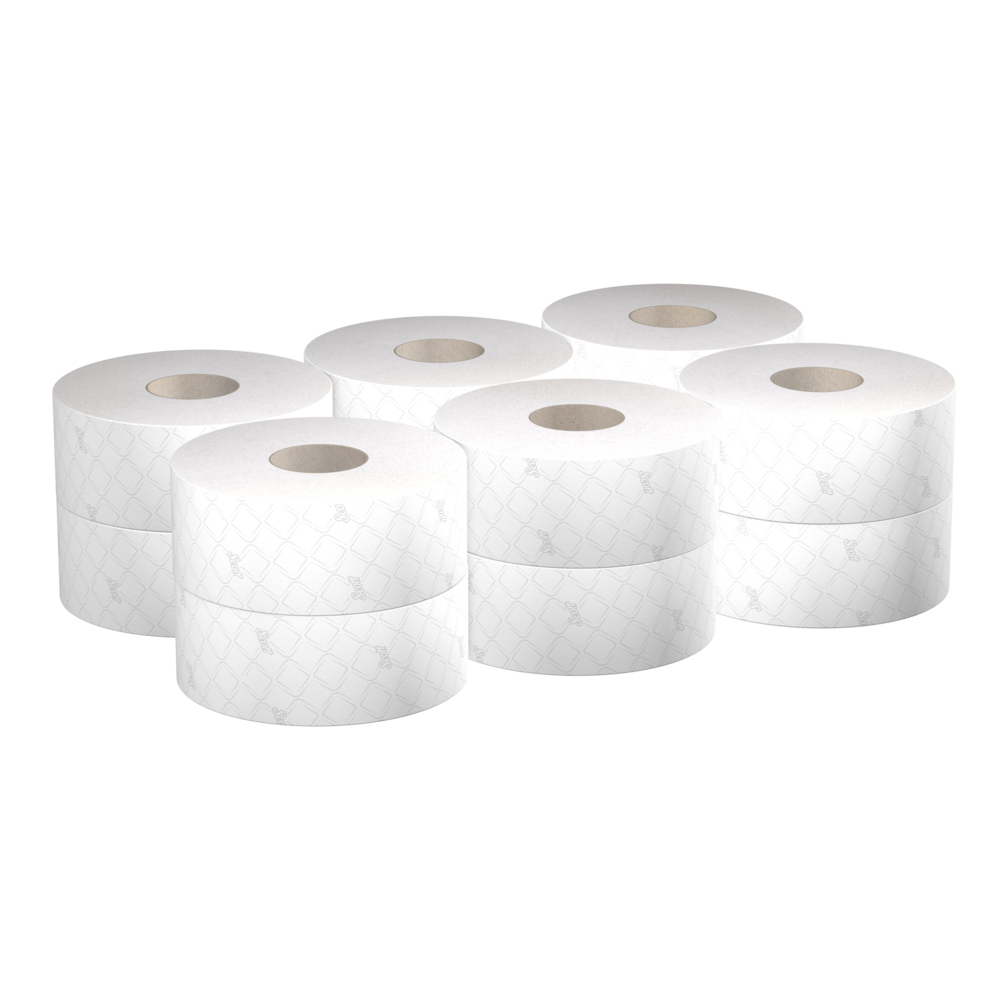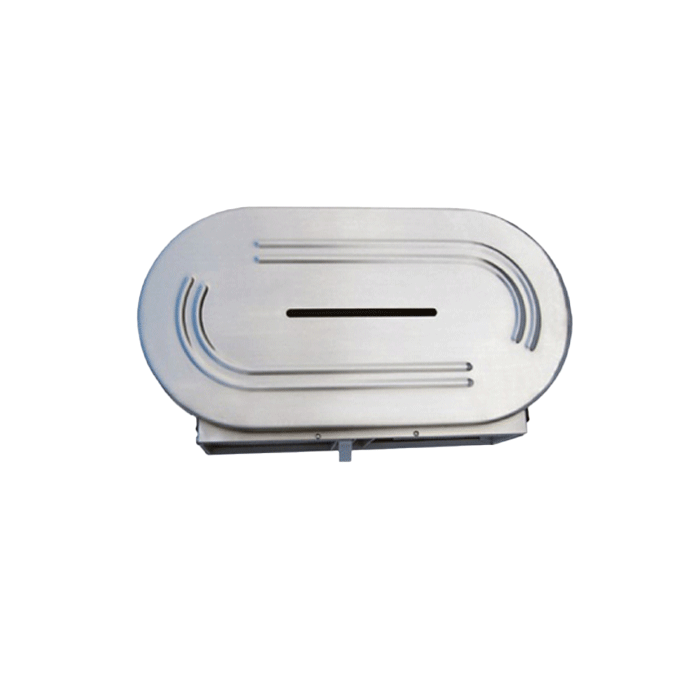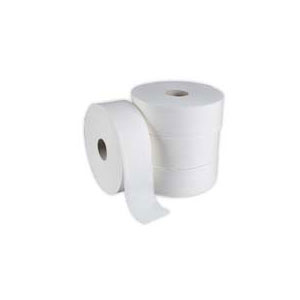In commercial settings, businesses and institutions often opt for jumbo roll toilet paper due to its cost-effectiveness and efficiency. These large rolls not only save money but also help reduce packaging waste, making them a more environmentally friendly choice. In this comprehensive guide, we will explore everything you need to know about jumbo roll toilet paper, from its benefits and types to its environmental impact and innovative uses.
Cost-Saving Tips for jumbo roll toilet paper Purchases

Buying in Bulk
One of the best ways to save money on jumbo roll toilet paper is to purchase in bulk. Many suppliers offer discounts for buying larger quantities, allowing you to lower your overall costs per roll. By stocking up on jumbo rolls, you can ensure that you always have an ample supply on hand while saving money in the long run.
Comparing Prices
It’s essential to shop around and compare prices from different suppliers when purchasing jumbo roll toilet paper. Prices can vary significantly depending on the brand, quality, and quantity of the rolls. By exploring your options and seeking out the best deals, you can maximize your savings without compromising on quality.
Utilizing Subscription Services
Some suppliers offer subscription services for jumbo roll toilet paper, allowing you to set up automatic deliveries at regular intervals. By opting for a subscription, you can enjoy additional discounts and convenience while ensuring that you never run out of toilet paper. This hassle-free approach can help you streamline your purchasing process and save both time and money.
| Supplier | Price per Roll | Bulk Discount |
|---|---|---|
| Supplier A | $1.50 | 10% off |
| Supplier B | $1.75 | 5% off |
| Supplier C | $1.60 | 15% off |
The Environmental Impact of Jumbo Roll Toilet Paper: Pros and Cons

Pros of Jumbo Roll Toilet Paper
- Reduced Packaging Waste: Jumbo rolls use less packaging material compared to traditional rolls, resulting in fewer cardboard cores and plastic wrappers being discarded.
- Lower Transportation Emissions: Due to their larger size, jumbo rolls require less frequent deliveries, reducing the carbon footprint associated with transportation.
- Sustainable Sourcing: Many jumbo roll toilet papers are produced using responsibly sourced materials and eco-friendly manufacturing processes, contributing to conservation efforts.
Cons of Jumbo Roll Toilet Paper
- Embodied Energy: The production of jumbo roll toilet paper requires significant energy input, including water, electricity, and chemicals, which can have environmental implications.
- Dispensing Issues: Some jumbo roll dispensers may lead to overuse or wastage of toilet paper if not properly managed, offsetting the environmental benefits of using jumbo rolls.
- Recycling Challenges: While jumbo rolls themselves are recyclable, the recycling process can be complex and costly, leading to potential landfill disposal in some cases.
Innovative Uses for Jumbo Roll Toilet Paper Beyond the Bathroom

Arts and Crafts
Jumbo roll toilet paper tubes can be repurposed for a variety of arts and crafts projects, such as creating binoculars, plant pots, or even musical instruments. Their sturdy and cylindrical design makes them versatile materials for DIY enthusiasts of all ages.
Packaging Material
The cardboard cores from used jumbo rolls can be flattened and utilized as eco-friendly packaging material for shipping or storage purposes. By upcycling these cores, you can reduce the need for single-use plastics and contribute to sustainable packaging solutions.
Gardening Aid
Jumbo roll toilet paper tubes can serve as biodegradable seed starters for gardening enthusiasts. Simply fill the tubes with soil and plant your seeds inside, then transfer the tubes directly into the ground once the seedlings are ready to be transplanted. This method helps minimize transplant shock and promotes healthy root development.
To be continued…
DIY Crafts and Projects with Jumbo Roll Toilet Paper
Miniature City
Create a miniature cityscape using jumbo roll toilet paper tubes as the main building blocks. Cut the tubes into various heights to represent skyscrapers, office buildings, and residential homes. Paint and decorate each tube to add details such as windows, doors, and rooftops. Arrange the structures on a large board or base to construct your own unique city design.
Desk Organizer
Repurpose jumbo roll toilet paper tubes as desk organizers to keep your workspace neat and clutter-free. Cut the tubes to different lengths and arrange them in a creative pattern inside a box or tray. Use the compartments to store pens, pencils, scissors, and other small office supplies. You can also paint or cover the tubes with decorative paper for a personalized touch.
Party Decorations
Turn jumbo roll toilet paper tubes into festive party decorations for special occasions and celebrations. Cut the tubes into rings of varying widths and paint them in vibrant colors to create decorative napkin rings or place card holders. You can also string together painted tubes to make colorful garlands or hanging ornaments to adorn your party space.
The History and Evolution of Jumbo Roll Toilet Paper
Jumbo roll toilet paper has a fascinating history that traces back to the late 19th century when the first perforated toilet paper rolls were introduced for commercial use. Over time, advancements in manufacturing technology led to the development of jumbo rolls, offering larger quantities of toilet paper for high-traffic public facilities. The evolution of jumbo roll toilet paper has been shaped by innovations in sustainability, efficiency, and user comfort, making it a staple product in various industries.
The demand for jumbo roll toilet paper grew significantly in the mid-20th century with the rise of modern office buildings, airports, and other public venues requiring durable and cost-effective restroom solutions. Manufacturers responded to this demand by producing jumbo rolls in various sizes and ply options to meet the diverse needs of consumers. Today, jumbo roll toilet paper continues to be a popular choice for businesses seeking economical and practical restroom supplies.
The evolution of jumbo roll toilet paper reflects ongoing efforts to improve sustainability and reduce environmental impact in the hygiene industry. Many manufacturers now offer recycled jumbo roll options made from post-consumer materials to promote resource conservation and waste reduction. Innovations such as biodegradable and compostable jumbo rolls further demonstrate a commitment to eco-friendly practices in toilet paper production. As consumer awareness of environmental issues continues to grow, the future of jumbo roll toilet paper is likely to focus on sustainable alternatives and greener technologies.
The Science Behind Jumbo Roll Toilet Paper: How It’s Made
Jumbo roll toilet paper is typically manufactured using a combination of virgin pulp, recycled fibers, and water in a process that involves several stages of production. The following steps outline the general process of how jumbo roll toilet paper is made:
- Pulping: Wood chips or recycled paper products are broken down into pulp using mechanical or chemical methods. The pulp mixture is screened to remove impurities and achieve the desired fiber consistency.
- Forming: The pulp slurry is poured onto a wire mesh screen to form a continuous sheet of wet paper. Water is drained from the sheet, and the remaining fibers are pressed and dried to increase strength.
- Creping: The dried paper sheet is creped, or scraped off the drying cylinder, to create a soft and pliable texture. Creping also adds bulk and absorbency to the final product.
- Winding: The creped paper is wound onto large rolls, known as parent rolls, which serve as the basis for jumbo roll production. The parent rolls are then cut into smaller jumbo rolls of various widths and lengths.
- Embossing and Perforating: Some jumbo roll toilet papers undergo embossing to create patterns or textures on the surface for improved softness and flexibility. Perforations are added to facilitate tearing and dispensing of individual sheets.
The production of jumbo roll toilet paper involves precise engineering and quality control measures to ensure consistent performance and comfort for end-users. Manufacturers adhere to strict standards and regulations to deliver safe and hygienic products that meet the demands of commercial and institutional settings.
Health and Hygiene Considerations for Jumbo Roll Toilet Paper
When choosing jumbo roll toilet paper for public facilities or high-traffic areas, it is essential to prioritize health and hygiene considerations to maintain a clean and sanitary restroom environment. Here are some key factors to keep in mind:
- Ply and Thickness: Opt for jumbo roll toilet paper with appropriate ply and thickness levels to provide sufficient absorbency and strength for effective cleaning. Thicker and softer paper can enhance user comfort and reduce the risk of skin irritation.
- Dispensing Systems: Select jumbo roll dispensers that promote single-sheet dispensing to prevent overuse and minimize waste. Controlled dispensing systems help regulate usage and maintain restroom cleanliness.
- Chlorine-Free Paper: Choose jumbo roll toilet paper made from chlorine-free bleaching processes to reduce exposure to harmful chemicals and promote environmental sustainability. Chlorine-free paper is gentler on the skin and safer for disposal.
- Antimicrobial Additives: Consider jumbo roll toilet paper treated with antimicrobial additives to inhibit the growth of bacteria and viruses on the paper surface. Antimicrobial properties can help reduce the risk of cross-contamination and improve overall hygiene in shared restrooms.
By prioritizing health and hygiene considerations in jumbo roll toilet paper selection, facility managers and business owners can create a welcoming and sanitary restroom environment for employees, customers, and visitors alike. Regular maintenance and monitoring of restroom supplies are crucial for upholding cleanliness standards and promoting good hygiene practices in public spaces.
To be continued…